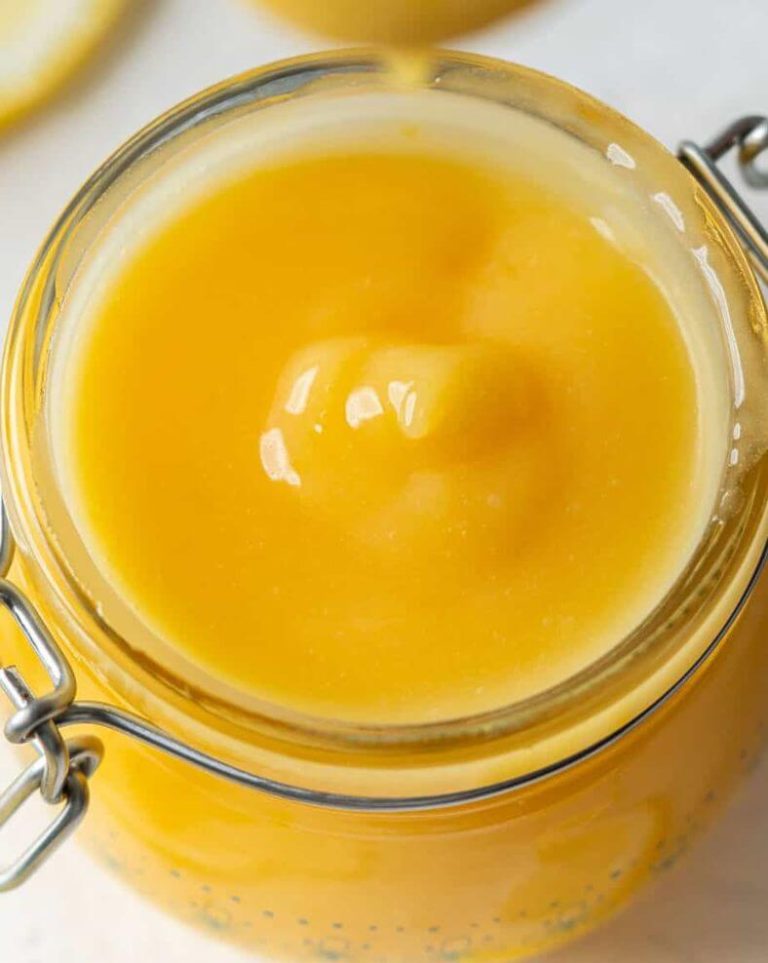Introduction
Lemon curd is a delightful, tangy, and sweet spread that can be used in a variety of desserts or simply enjoyed on its own. Follow this step-by-step guide to make the perfect lemon curd every time.
Ingredients
- 2 large eggs
- 3 large egg yolks
- 1 cup granulated sugar (200g)
- 1 tbsp lemon zest (6g)
- 3/4 cup lemon juice (180ml)
- 1/3 cup unsalted butter, cold, and cut into cubes (75g)
Nutrition Information
- Serving Size: 1 tablespoon
- Number of Servings: 16
- Calories: 90
- Total Fat: 4g
- Saturated Fat: 2.5g
- Cholesterol: 45mg
- Sodium: 5mg
- Total Carbohydrates: 12g
- Sugars: 12g
- Protein: 1g
Instructions
Step 1: Prepare the Mixture
- Whisk the eggs, yolks, sugar, lemon juice, and lemon zest in a heat-proof bowl until you get a homogenous mixture. Set aside.
Step 2: Cook the Curd
- Set up a double boiler: Place the heat-proof bowl over a pot of simmering water. Ensure that the bowl does not touch the water.
- Cook the mixture for 10-15 minutes, whisking constantly. The curd is ready when it thickens enough to coat the back of a wooden spoon. When you run your finger through it, the line should stay separated.
Step 3: Incorporate the Butter
- Remove the bowl from the heat immediately after it thickens.
- Add the cold butter cubes and whisk until the butter is fully incorporated into the curd.
Step 4: Chill the Curd
- Cover the curd with cling film while it’s still hot, ensuring the cling film touches the top surface of the curd to prevent a skin from forming.
- Chill in the fridge for at least 2 hours.
Step 5: Final Preparation
- Whisk the chilled curd to achieve a smooth texture. If any lumps have formed, strain the curd through a fine-mesh sieve.
- Store the curd in an air-tight container in the fridge. It will continue to thicken as it chills.
Notes
- Straining the curd: If there are any lumps after cooking, strain the lemon curd through a fine-mesh sieve for a smoother texture.
- Heat-proof bowl: Ensure the bowl is heat-proof and does not touch the simmering water.
- Simmering water: Keep the water at a simmer, not a boil, to prevent the eggs from cooking too fast and forming lumps. If lumps form, simply strain the curd.
Conclusion
Making lemon curd at home is easy and rewarding with this step-by-step guide. Whether you’re using it for tarts, cakes, or simply spreading it on toast, this tangy and sweet curd is sure to delight your taste buds. Enjoy your homemade lemon curd!
